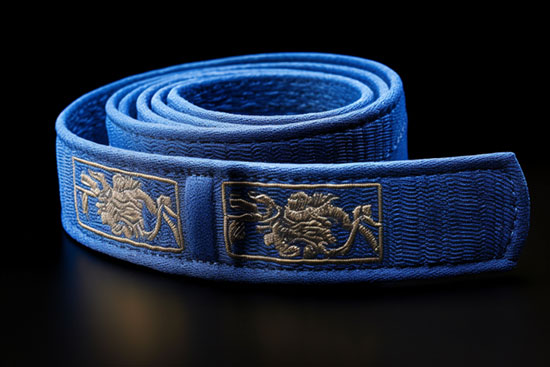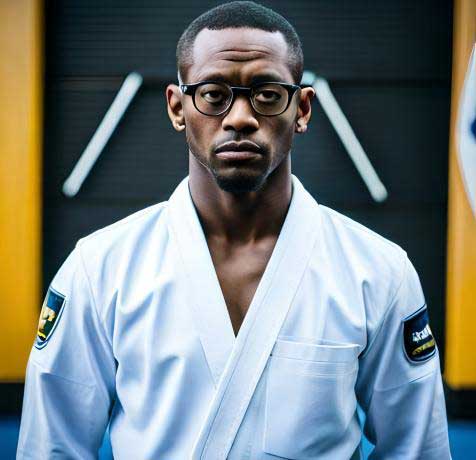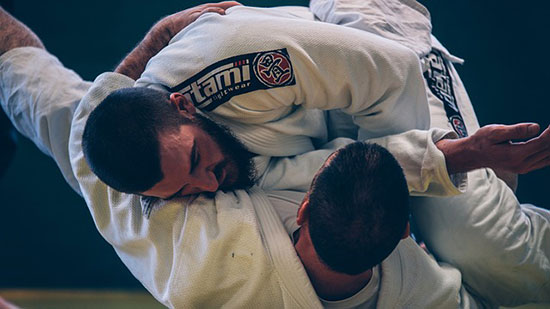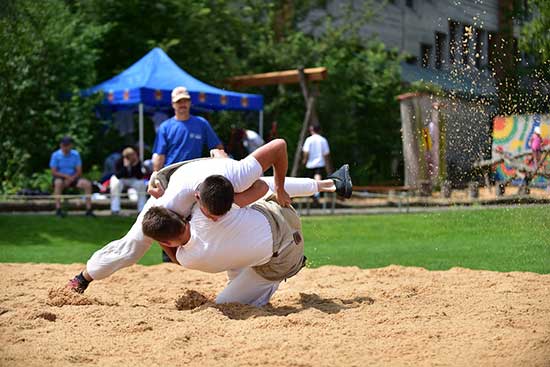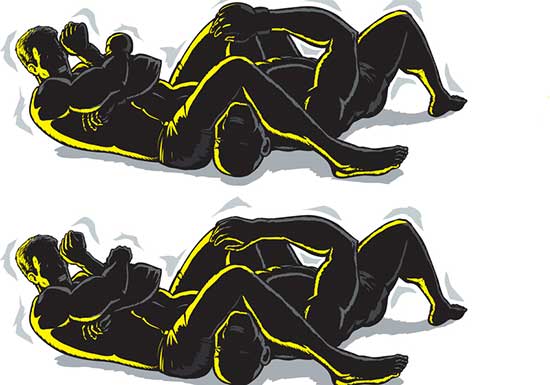Familiar with “Machado BJJ”? This is probably in your mind similar to a “Gracie Jiu-Jitsu” school, but it is not, since BJJ as such does not exist.
In other words, Machado was one of the original members of Gracie Jiu-Jitsu and later left to open their own academy.
If you want to learn more about their differences, there is a book written by Rorion Gracie called “The Gracie Jiu-Jitsu in the South Zone” (Livros da Lua) that explains how Hélio, Gracie’s way of life and his philosophy was too rigid and extreme for some of his own students.
So, What are the most common differences between Machado and Gracie BJJ?
The most common difference between Machado and Gracie BJJ is that Machado emphasizes the ‘neutralizing’ of an opponent on the ground, while Gracie emphasizes ‘submission.’
The other difference is the basic submission of Gracie Jiu-Jitsu, which is the “armbar,” although this submission can be used in a number of ways, most commonly perpendicularly to the ground.
Machado’s basic submission is called by them “the cross choke.” This cross-choke can be done with either arm and when done properly, it does not allow your opponent to tap on his stomach.
This creates a very painful and long process for your opponent to tap. In a real fight, this technique can be used as a defense or as a submission.
Contents
What Is Machado?
The Machado family began studying Jiu-Jitsu at the original Gracie Academy in Copacabana. When this school closed in the mid-’60s, the Machado brothers immediately opened their own Jiu-Jitsu academy in Rio de Janeiro, Brazil.
The Machado family was one of the originals who created Gracie Jiu-Jitsu. But because Hélio’s rigidity and authoritarianism limited them, they left to open up their school.
Machado Techniques
Machado Jiu-Jitsu is like a bridge between the classical Jiu-Jitsu of old and modern Brazilian Jiu-Jitsu.
It is characterized by a strong emphasis on the ground game, while all other techniques are taught with a very conservative approach.
However, this has since changed, and there are many Machado black belts that can submit their opponents in various ways.
Machado Jiu Jitsu has been more popular in Brazil than Gracie Jiu-Jitsu for some time now. Even though Machado BJJ is based on the Gracie Jiu-Jitsu way of life, discipline, and beliefs, Machado has a clear hierarchy in the academy.
All BJJ classes in the Machado academy begin with warm-ups, stretching, and drills. Also, there are many self-defense techniques that are not taught elsewhere, including takedowns like the double and single leg takedowns (academically called “throws”) or “trips,” and others that also employ sweeps that are used to take down an opponent.
Unless it is a competition, the training can be more of a game in the ring. The coach will tell one student to attack, and then another student has to defend.
The students also play a game with each other where they pretend to be holding their opponent in the guard position, and then they run away.
When you are in the guard position your main goal is not only to prevent your opponent from scoring points but also to get him into a bad position so you can score points.
Advantages of Machado Bjj
- Excellent BJJ school in Rio de Janeiro.
- Good philosophy of training.
- Free classes are recommended.
Disadvantages of Machado Bjj
- Not readily available
- More physical than some other styles.
- Younger students may not be able to do the techniques or understand the concepts well enough to compete with Brazilian Jiu-Jitsu players from other schools.
What is Gracie BJJ?
Gracie Jiu-Jitsu is a Brazilian Jiu-Jitsu (BJJ) system. It is named after the famous Gracie family, which created and refined the art at Ralph Gracie’s Academy in Rio de Janeiro.
The family’s students are known as “champions” because they are some of the best fighters in the world.
The Gracie BJJ way of life is based on discipline and commitment to hard work under strict rules. These rules are designed to make students better people and make the art of Jiu-Jitsu an integral part of their lives.
Techniques un in Gracie BJJ
Submission is a way to end a fight. Gracie Jiu-Jitsu teaches students how to cause pain in an opponent so that he will concede or ‘tap out.’
The goal of BJJ is to control, dominate and submit your opponent. Jiu-Jitsu involves lots of pressure and pain on the joints, especially in the arms, legs, and neck.
All pressure points are used to choke or twist your opponent’s body until they give up or pass out from the pain.
They employ different types of Chokes, but the most common are: Choke holds Armbar, and neck cranks.
The Gracies believed that all martial arts are alike and can be learned. They created a blend of judo, jujutsu, and Brazilian Jiu-Jitsu to teach their methods.
They taught the Gracie family how to fight on the ground, which is why other people call them “Ground Masters.”
Advantages of Gracies BJJ
- A widely recognized and respected BJJ school.
- A very effective way of fighting for self-defense purposes.
- It helps you to learn many other self-defense techniques apart from Jiu-Jitsu, like boxing and wrestling.
- Develops balance and coordination
Disadvantages of Gracies BJJ
- Very expensive. Classes can cost up to $ 900 USD per month.
- No free classes are offered.
- Your BJJ training can be limited to just 2 hours per day.
Differences between Machado vs. Gracie BJJ
Many of the differences between these two Jiu-Jitsu martial arts have to do with the history of the schools and the styles of training.
- Starting positions: The starting positions differ in that Machado Jiu-Jitsu starts from a standing position, whereas Gracie Jiu-Jitsu starts from a wrestling position.
- Attacks/Defense: There are different attacks/defenses in each style
- Training styles: the training styles are very different because of the differences in starting positions.
- Weaknesses: There are many weaknesses in each of these martial arts as well. For example, Gracie Jiu-Jitsu techniques do not emphasize as much on attacking from a standing position as opposed as Machado Jiu-Jitsu techniques which emphasize attacks from standing positions more.
- Mental attitude: The mental attitude in each style differs. For example, Gracie Jiu-Jitsu stresses the importance of mental attitude and determination more than Machado Jiu-Jitsu, which emphasizes technical expertise.
Similarities between Machado vs. Gracie BJJ
- Both Jiu-Jitsu styles have their own characteristics. For example, like with other Jiu-Jitsu styles, your opponent must be well aware of your technique and position in order to be able to attack you or defend himself.
- Both BJJ schools have a great deal of respect and advocates in the Jiu-Jitsu community.
- The history of both schools is very similar
- Both schools’ main focus is on self-defense.
| Aspect | Machado BJJ | Gracie BJJ |
|---|---|---|
| Founders | Founded by Carlos Machado and his brothers | Founded by Carlos Gracie and his family |
| Philosophy | Focuses on efficient techniques and fluid movement | Emphasizes self-defense and leverage-based tactics |
| Techniques | Incorporates a wide range of techniques and innovations | Relies on core fundamental techniques |
| Guard Styles | Known for its active guard and open guard variations | Emphasizes closed guard and pressure-based attacks |
| Competition | Has a strong presence in competitive BJJ tournaments | Known for its success in early MMA and challenge matches |
| Training Methods | Emphasizes live rolling and situational sparring | Focuses on drilling fundamental techniques |
| Uniforms | May allow colored and non-traditional gi variations | Generally adheres to traditional white gi |
| Teaching Methods | Often includes a conceptual approach to instruction | Focuses on detailed step-by-step instruction |
| Approach to MMA | Known for incorporating BJJ into mixed martial arts | Has a historical connection to early MMA success |
Conclusion
The Gracie family and their students have been the primary developers of Brazilian Jiu-Jitsu. Today, with the growth and popularity of BJJ, many new schools have appeared and have developed their own unique way of playing the game.
Ultimately, there is no one school of martial arts that embodies all the values and techniques of BJJ better than the other.
Neither school is superior to the other; it’s a matter of personal preference. Students must decide for themselves which style works best for them.
